Pros and cons
Using laminate flooring in the kitchen has 5 main advantages:
- Ease of delivery, stacking... Unlike roll linoleum, which is not always convenient to lift into the apartment, laminated boards are sold in compact, convenient packages. Putting simply, trimming too.
- Variety of design options... Due to the large assortment of patterns and colors, it looks appropriate in most interiors.
- Tactility... A warm surface often imitates a wooden texture, it is pleasant to walk on it.
- Can be installed on warm floors... This is especially important for private houses and cold apartments on the ground floors.
- Hygiene... Although there are joints between the lamellas, they are practically invisible and dirt in them (as in the seams of a tile) does not clog. Therefore, cleaning the floor is a pleasure.
The photo shows the flooring with imitation of natural wood
The laminate has and limitations:
- High probability of chips, scratches... You may drop a sharp knife or break a cup while cooking - shards or a blade can damage the decorative layer of the flooring. Unlike natural wood, sanding will not save you, because the top layer is a glued film.
- Waterproof laminate is expensive... No other will work, after all, the working area in the kitchen is an aggressive environment.
- Low-quality panels emit dangerous formaldehyde... The substance is recognized as a carcinogen, so be sure to check the certificates of conformity before purchasing.
- Complex preparation of the base... The floor must be leveled, the maximum height difference is 2-3 mm, only in this case the coating will last a long time. It is not necessary to correct the curvature of the floor backing! The thicker it is initially, the faster it will shrink and lead to squeaks of lamellas or even broken locks.
Which laminate to choose?
In many respects (wear resistance, moisture resistance), laminate for the kitchen loses to tile or porcelain stoneware. But this does not mean that it is better to choose a tile: a high-quality laminate flooring will last at least 10 years, so there is nothing to be afraid of. The main thing is to learn choose laminate into the kitchen right.
The first difference is laminate class... The higher it is, the more severe impact the surface can withstand. The 34th class has the highest abrasion resistance, it is even laid in the halls of hotels or cafeterias. Manufacturers cover almost all models of this laminate with a water-repellent compound, which makes 34 class an excellent choice for the kitchen.
Important! The moisture-resistant laminate for the kitchen is marked waterproof, aqua protect. Or drawings in the form of a drop of water, a mixer.
You have to pay for quality, so the cost of the highest class cannot be called budget. To save a little, it is possible to purchase the 33rd class laminate models.
The top layer is abrasion resistant, withstands high loads, but the base is sensitive to moisture.Therefore, it is better to additionally cover the locks and open ends with a special protective compound.
31, 32 types are even cheaper, but are no longer suitable for kitchens: therefore, if you do not want to move the floor a year after renovation, you should not save initially.
The second important nuance is type of lock connection... There are two main ones:
- lock (cheap snap-on lock, it is better to lay it for specialists)
- and click (more expensive system, it is used in grades 33-34).
In terms of hygiene, it is not the lock that is more important, but the presence of a chamfer... To ensure that the floor is not laid with a single slab, but with separate boards, choose types with optical chamfers (dark outline at the edges). The lamellas will be visually separated from each other, while the absence of a real chamfer will not allow moisture and dirt to linger.
The last fundamental difference between types of laminate for the kitchen - color, texture... The most practical is embossed surface of medium shade - stains and debris are invisible on it, the probability of slipping is reduced to zero.
Application
To find the right laminate for your kitchen, the first step is to understand how and where it will be used.
The classic use is to lay laminate flooring on the entire kitchen floor. The direction in which it will be laid can change the perception of the room's geometry:
- Boards along narrow walls in a long room will move the space apart, making the kitchen wider.
- Diagonally laid slats make the room more spacious.
The photo shows the same surface finish for the accent wall and floor
The photo shows an example of a single contour in the kitchen-living room
Care advice
There are no special requirements for the care of the laminate - in home use in the kitchen, it is enough to vacuum with a soft brush, wipe with a damp cloth once a week. But you still need to follow some rules, because the kitchen is designed for cooking:
- Do not use abrasives... Powders, hard brushes or sponges can scratch the coating. The best choice is soft cloths, gels and washing liquids.
- Wipe up the water as quickly as possible... Spilled or dripped on the floor? Wipe off immediately.
- Remove stains immediately... This is especially true for fat and dyes (tomato paste, carrots, beets, wine).
- Repair chips, scratches in time... This will help with wax crayons in the color of the laminate.
Important! Set up an economical water supply on a washing vacuum cleaner or robotic assistant so that excess moisture does not damage the floor.
Pictured is a light laminate in the studio
How does it look in the interior?
The use of laminate flooring for the kitchen is a common solution for single-contour flooring in studios. You don't have to come up with a transition in the center of the room, the coating is suitable for living and working areas at the same time.
For lovers of home cooking and practical housewives, the option of combining slats with tiles is more suitable. The tiles are laid 60-80 cm in the working area, the rest of the space is lined with laminate. It is important that the joint of the coatings is at the same height - therefore, it is better to turn to professionals for laying the floor.
Look options for combinations of tiles and laminate.
In the photo, the light wood-like floor in the apartment goes well with decorative inserts on the wall.
In some kitchens, laminate panels are also either combined with tiles or used separately. To protect the surface from impacts and chips, small rugs-paths are laid in the working area: they will be a kind of protective buffer against falling knives and dishes.
If the floors in the bedroom or living room forgive many mistakes when choosing, this will not work with the kitchen: the flooring should be selected carefully, then it will last a long time.

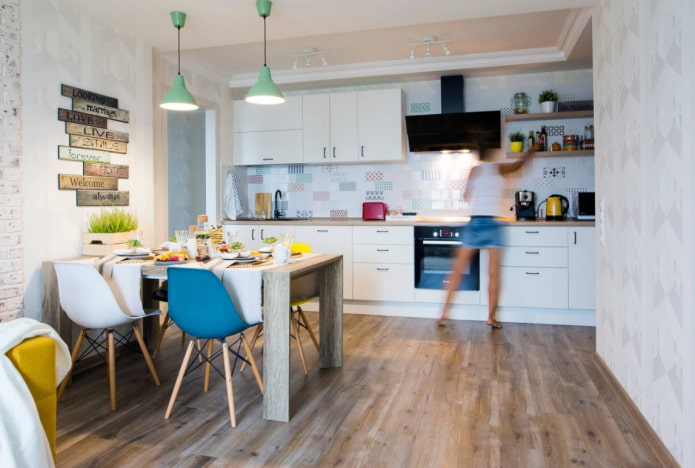
 10 practical tips for arranging a small kitchen in the country
10 practical tips for arranging a small kitchen in the country
 12 simple ideas for a small garden that will make it visually spacious
12 simple ideas for a small garden that will make it visually spacious

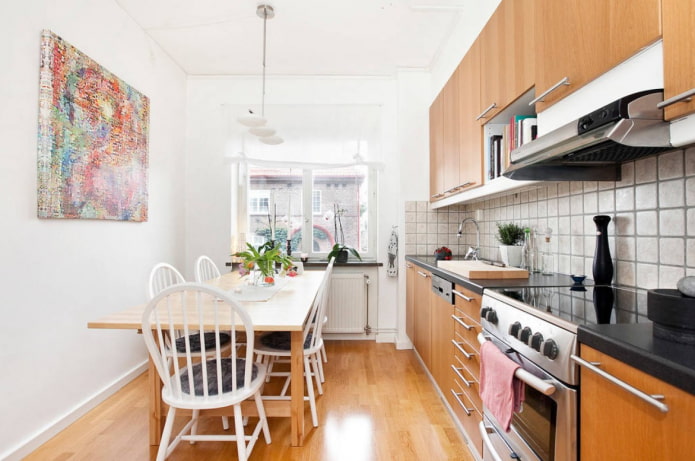
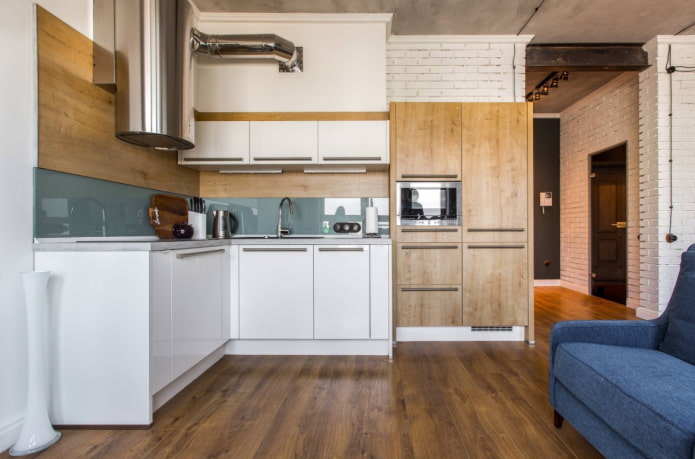
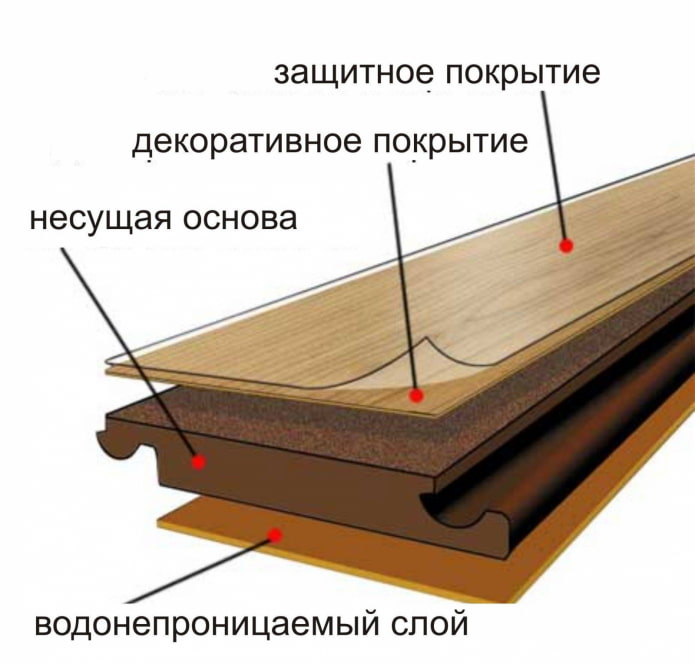
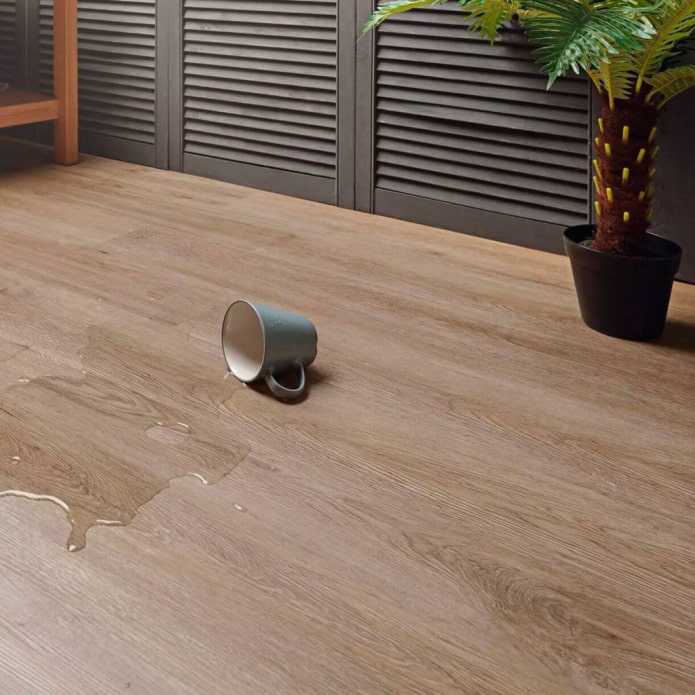
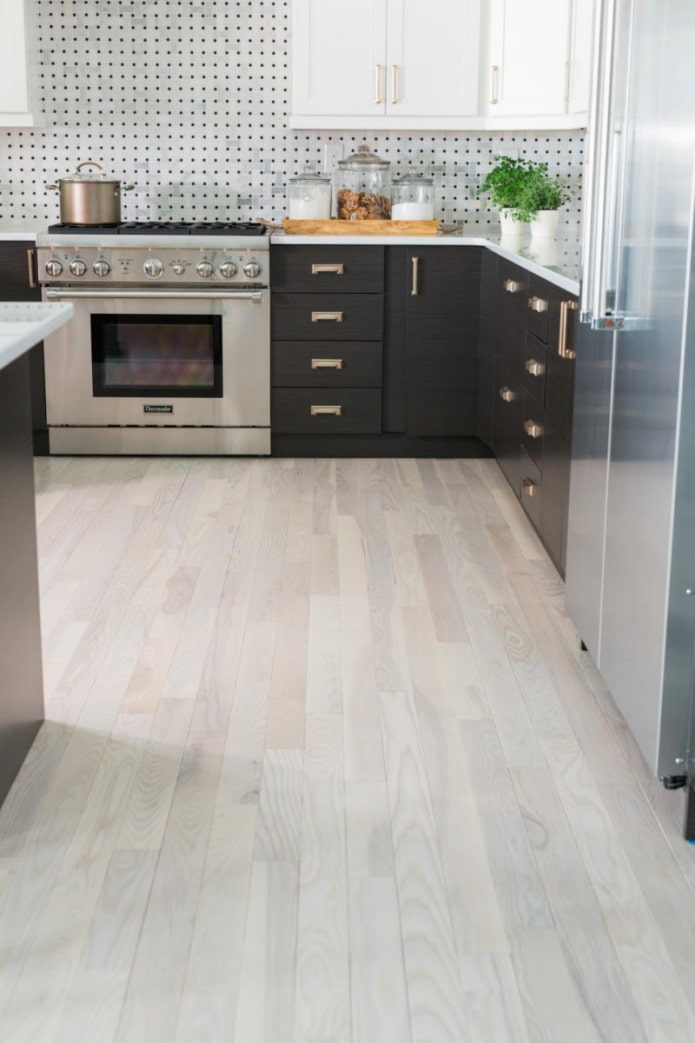
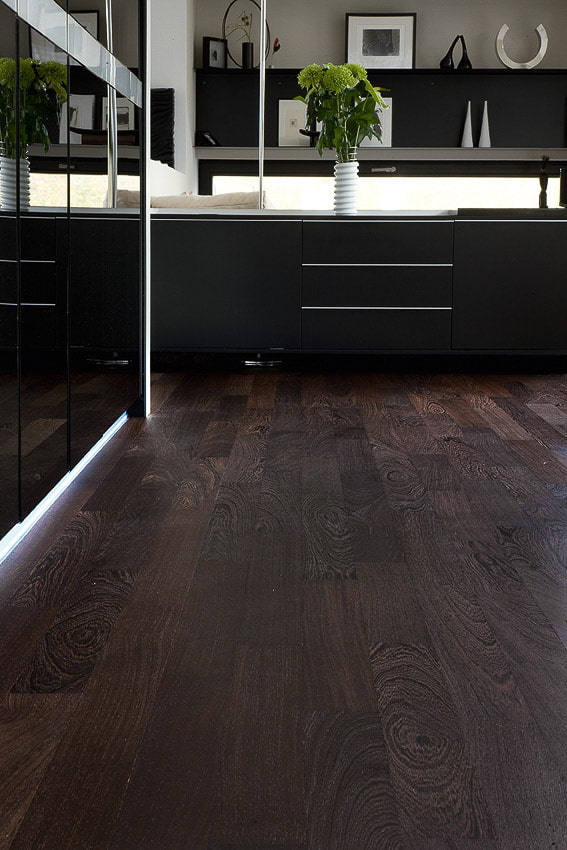
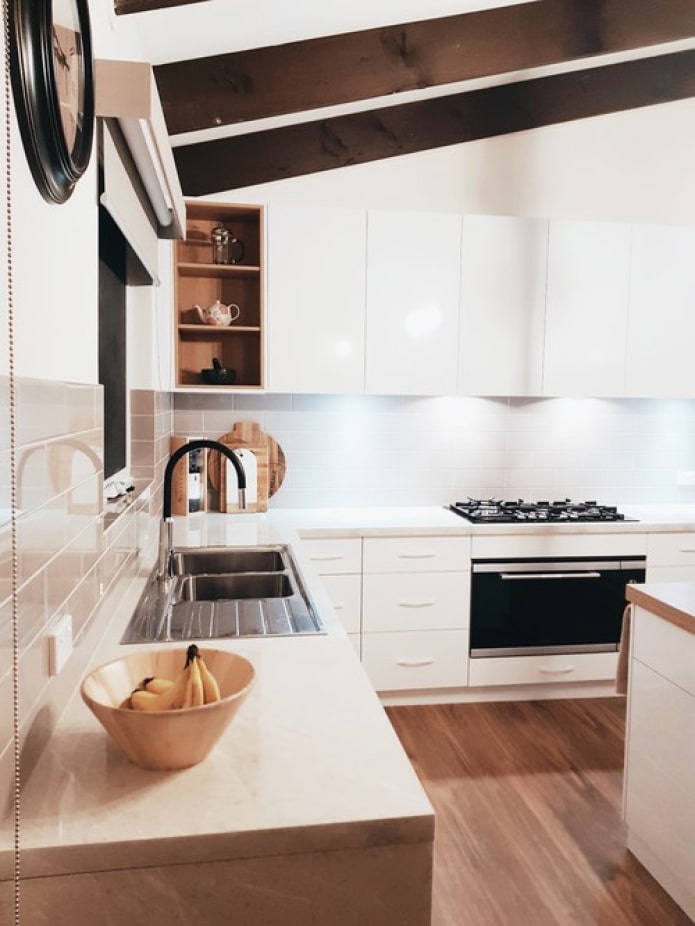
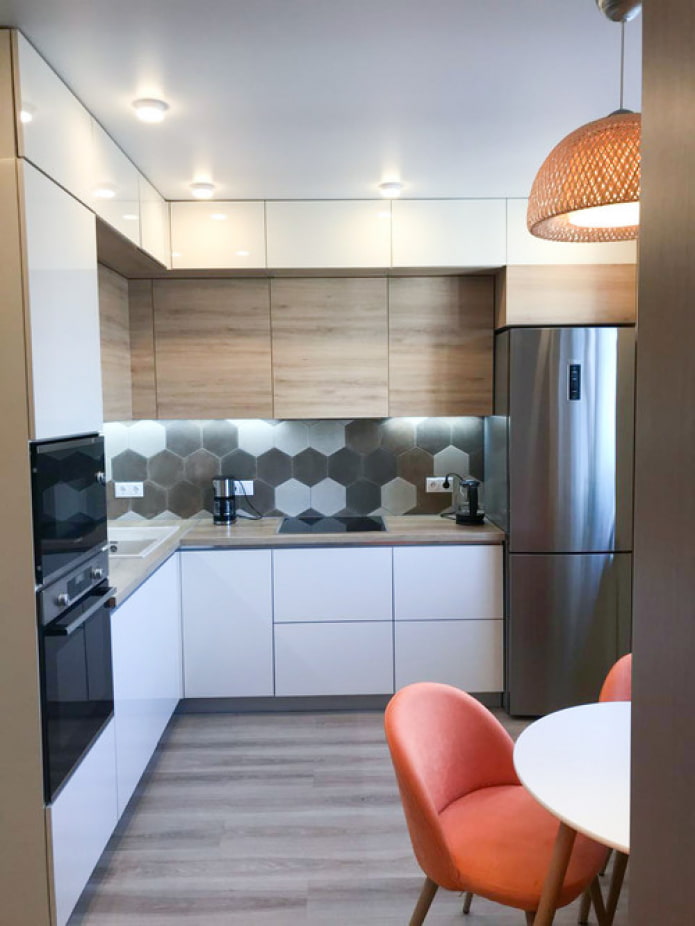
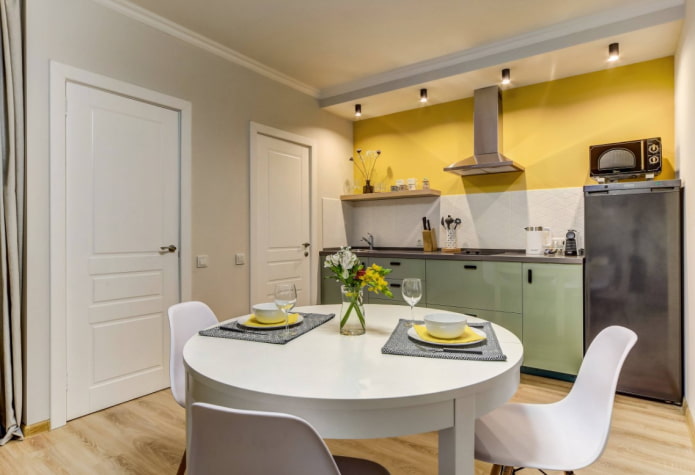
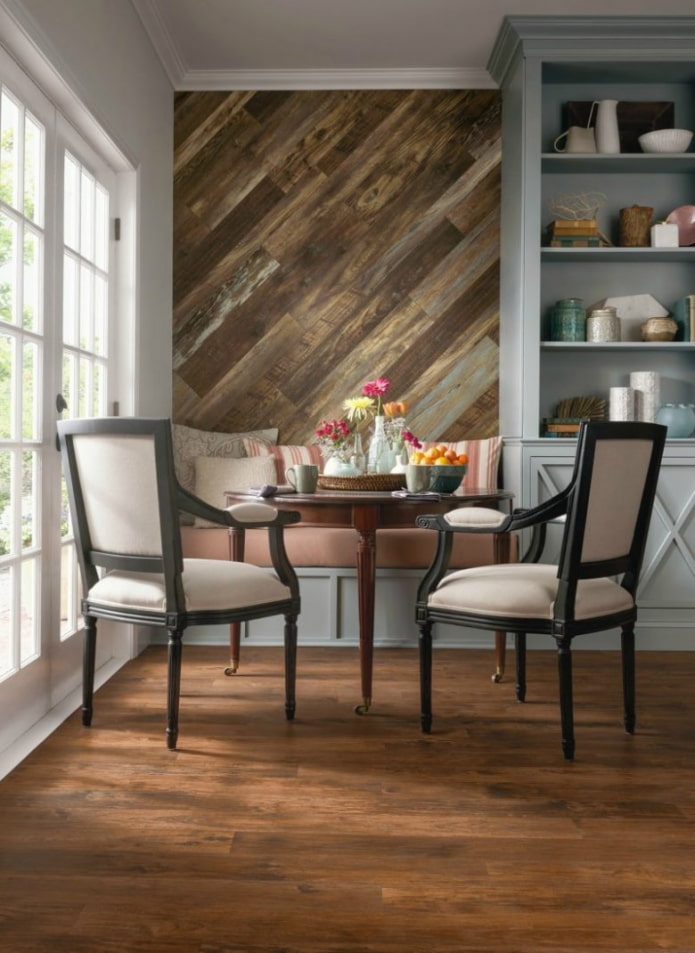
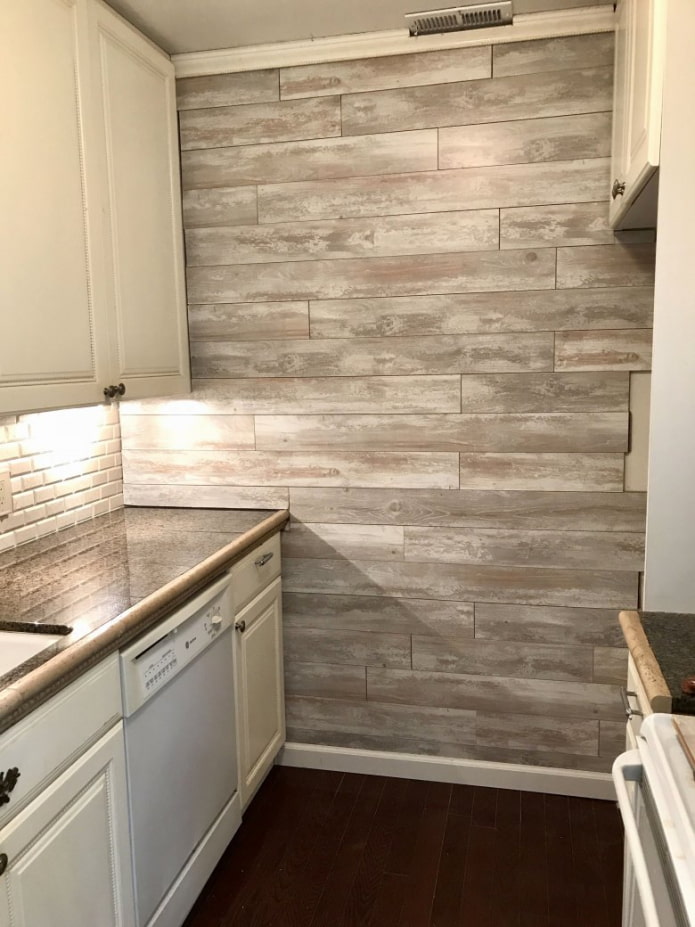
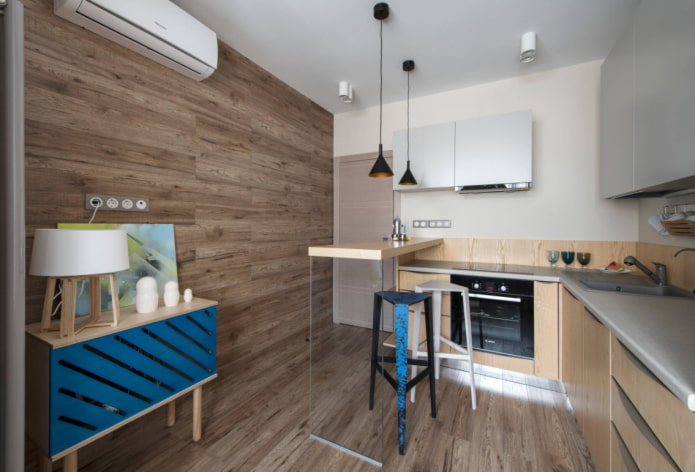

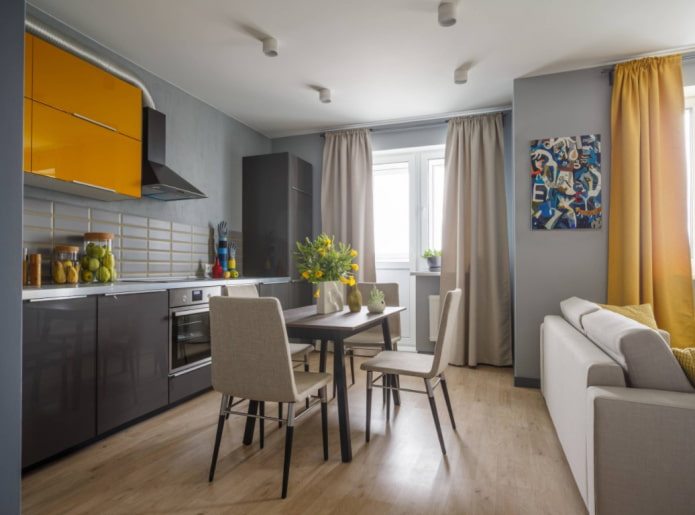
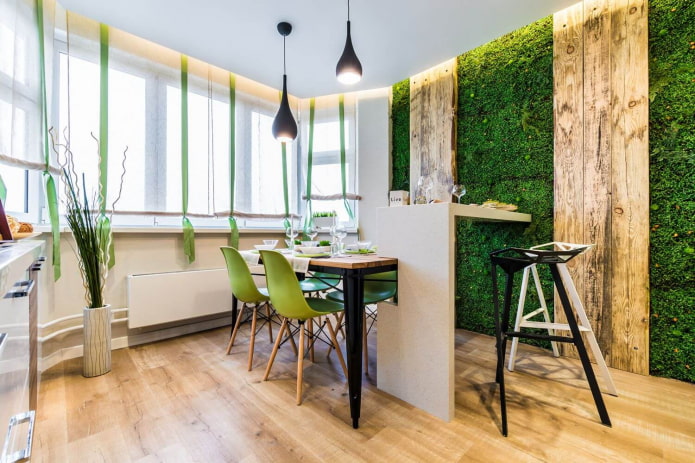
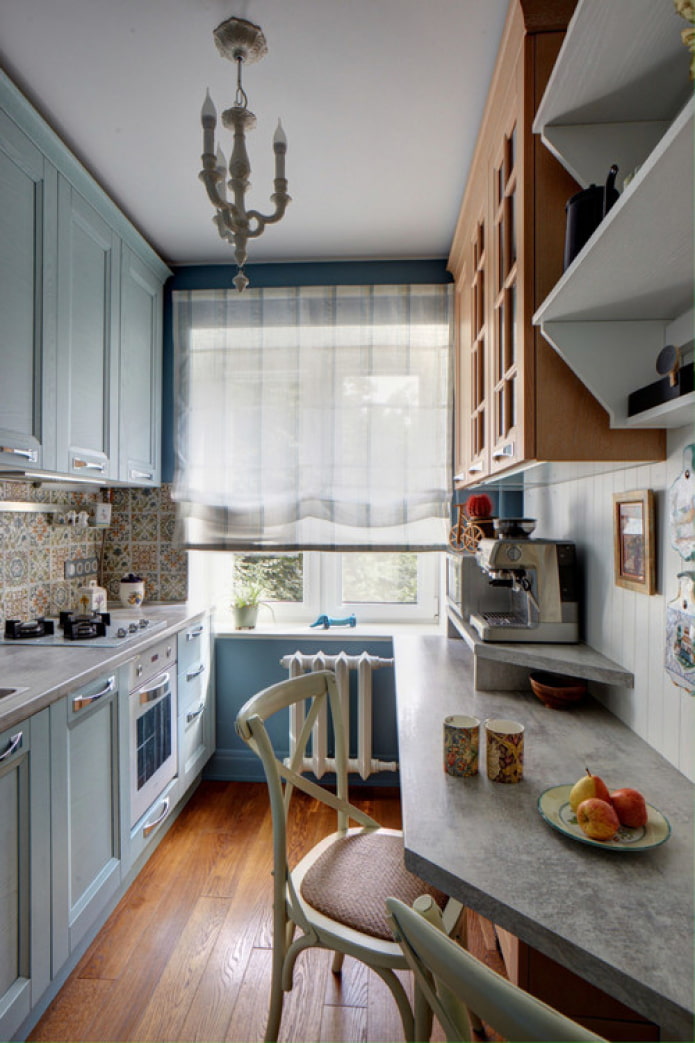


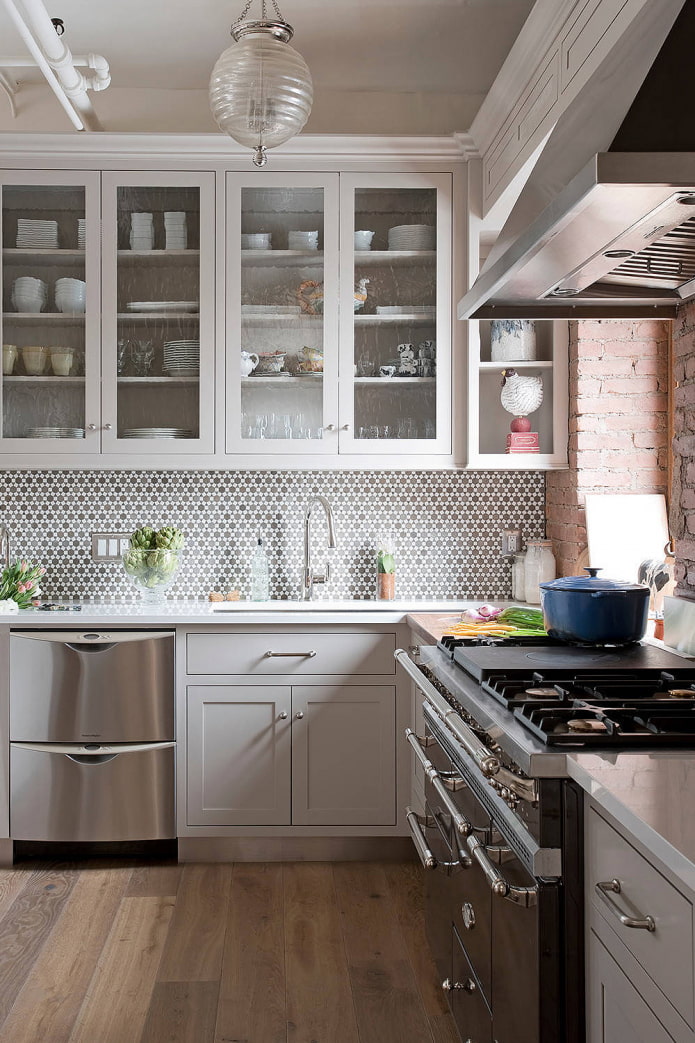

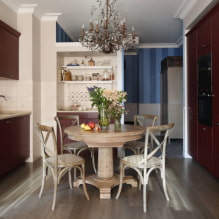
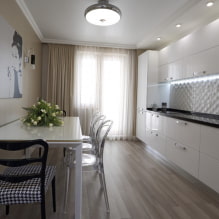

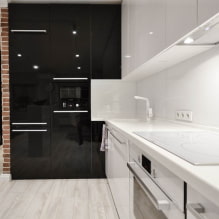


 How to choose the color of your kitchen sink?
How to choose the color of your kitchen sink? White kitchen set: features of choice, combination, 70 photos in the interior
White kitchen set: features of choice, combination, 70 photos in the interior Black set in the interior in the kitchen: design, choice of wallpaper, 90 photos
Black set in the interior in the kitchen: design, choice of wallpaper, 90 photos How to choose curtains for the kitchen and not regret it? - we understand all the nuances
How to choose curtains for the kitchen and not regret it? - we understand all the nuances Design of a white kitchen with a black countertop: 80 best ideas, photos in the interior
Design of a white kitchen with a black countertop: 80 best ideas, photos in the interior Kitchen design with green wallpaper: 55 modern photos in the interior
Kitchen design with green wallpaper: 55 modern photos in the interior